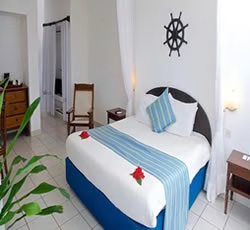10 Reasons to Visit Kenya for a Safari Holiday
Overview
Capital: Nairobi Language: English and Swahili Literacy Level; Average Forest Cover: 10% of land mass Tourism Success Index: 84%
Kenya is accessible via 4 international airports; Jomo Kenyatta International Airport in the city of Nairobi, Moi International Airport in Eldoret both of which are inland airports, Moi International Airport in the city of Mombasa and Malindi International Airport in Malindi. The latter are coastal airports.
These airports are serviced by numerous international carriers including the national airline Kenya Airways. Kenya has good connections to destinations throughout Europe, the Asia- Pacific region, USA and Africa. Today, Kenya has direct flights from USA. Kenya has an extensive and quality road network among East African countries followed by Rwanda. Navigating the major tourism circuits is relatively easy and also possible with passable roads in the interior remote off-the-beaten tracks by 4x4.
GEOGRAPHY
Located in East Africa, Kenya borders the Indian Ocean to the east, Somalia to the northeast, Ethiopia to the north, South Sudan to the northwest, Uganda to the west, and Tanzania to the south. Nairobi, the capital of Kenya, is situated slightly south of the centre point of the country at an altitude of 1,700 meters or 5,500 feet above sea level.
Kenya lies on the equator and shores of common borders with Tanzania, Uganda, Somalia, Ethiopia & South Sudan. It is these countries that make up the region of “East Africa”. Kenya is roughly the size of state of Texas or the country of Spain. As a matter of fact, the equator divides the country into two near equal halves.
POPULATION & DIVERSITY
Estimated at 55 million in 2024, the population of Kenya is relatively young, with 43 percent of all Kenyans aged between zero to 14 years. Only 35 percent of the population lives in urban areas, though this figure is expected to expand to 46.5 percent by 2030.
The population of Kenya is highly heterogeneous (ethnically diverse). There are 42 tribal ethnic groups, each with their own dialects though most people in the country understand Kiswahili (the most spoken language in East Africa) as well as their own tribal languages. English is commonly spoken in the major towns and at all the lodges and hotels. The predominant religions in Kenya include Christianity 82.6%, Islam 11% and other religions.
LANGUAGE
English and Kiswahili are the official languages of Kenya. Kenyans also speak a variety of their indigenous tribal languages. The Kikuyu of the Central Highlands are the most populous followed by the Luyha people of Western Kenya.
CLIMATE
Although Kenya lies across the equator, annual rainfall is highest in the central highlands, western and lake basin regions. Rest of the country receives lesser and rather variable amounts from year to year.The variety of relief and the range of altitude in Kenya produce a considerable number of distinctive local climates and local weather too numerous to be detailed here.
SEASONS
Short rains are generally from October to November.The long rains last from March to early June. Climate change has seen a huge variance in expectations with extreme weather patterns noted in recent months.
The average day-time temperature year-round
is between 20°C / 68°F and 28 C / 82 F, but it is warmer at the coast where it is hot and humid all year-roun
10 Reasons to Visit Kenya on a Safari Holiday
1. Amazing Native Animals - Wild, Birds & Marine
Kenya is the de facto safari country and is worth a visit. It exceeds the offerings of parks of the southern side of Africa which include Namibia and South Africa. It rivals Tanzania whose major safari circuit is concentrated in the north part from Arusha to Lake Manyara National Park, Tarangire National Park, Ngorongoro Conservation Area and the great Serengeti National Park by having a well laid out country-wide exploration circuit.
The Northern Frontier Circuit starts from the Aberdare National Park, sweeping to close-by Mt. Kenya National Park, the Olpejeta Conservancy, Meru National Park, Samburu National Reserve and the Matthews Range further to the North. The Southern Circuit majorly encompasses Masai Mara National Reserve & the Greater Mara Conservancies, Chyulu Hills National Park, Tsavo West National Park, Tsavo East National Park and Amboseli National Park. The Central Circuit includes the Great Rift Valley destinations of Lake Naivasha, Hells Gate National Park, Lake Elementaita & Soysambu Conservancy, Lake Nakuru National Park, Lake Baringo & Lake Bogoria.
Kenya has 23 terrestrial National Parks, 28 terrestrial National Reserves, 4 marine National Parks, 6 marine National Reserves and 4 national sanctuaries. Nearly 8% of the Kenya’s land mass is protected area for wildlife conservation. Kenya's commitment to wildlife and environmental conservation, biodiversity and mitigation to climate change is extends to various ecosystems like forests, wetlands, savannah, marine, arid and semi-arid.
As of now, there are approximately 167 conservancies in Kenya which complement the offerings of Kenya Wildlife Service managed protected areas and Kenya Forest Service protected areas. These conservancies cover over 6.35 million hectares (about 15.7 million acres) of land, providing vital habitats for wildlife while also supporting local communities.
A wildlife census was carried out in 2021 and the current trends after the drought in 2022 and the increased rainfall in 2023-2024 estimates Kenya lion population to be over 2,600 spread across Kenya's protected areas, over 36,000 elephants, over 37,000 giraffes, over 1,200 cheetahs, over 5,700 hyenas, over 45,000 buffalos, over 1,800 rhinos and millions of resident and migrant herbivores, one of the highest in world after Tanzania.
Kenya's pride is with its BIG 5 wildlife namely, the Elephant, Lion, Leopard, Buffalo and Rhino. In addition, it has the SMALL 5, namely, the Elephant Shrew, Rhino Beetle, Buffalo Weaver, Lion Ant and the Leopard Tortorise. There are 6 African CATS (both big and small) found in Kenya, namely, the Cheetah, Leopard, Lion, African Serval Cat, African Wildcat (Felis silvestris lybica), and the Caracal (Caracal caracal). Its big and small marine animals include the Dolphin, Turtle, Whale Shark, Billfish, Sail fish and White Whales
Kenya is also endowed naturally as the second home of the great annual wildebeest migration, dubbed – “the greatest animal spectacle on earth.” Masai Mara National Reserve which shares the same ecosystem with Serengeti National Park and only separated by a territorial border share seasons for the presence of the migration animals. This is one major reason to visit Kenya for a wildlife safari holiday especially from July to October of every year.
2. Kenya is One of the most Affordable Africa Holiday Destinations
Another compelling reason to visit Kenya on a safari holiday is definitely its affordability and value for money. Though a Safari to Kruger National Park in South Africa is way cheaper than Masai Mara because of park fees and accommodation, life is generally expensive in South Africa's cities with some like Cape Town being way too pricey. Namibia in southern Africa is also expensive in terms of accommodation, cost of holiday activities and guided tours. The lodges and tented camps in Tanzania are some of the most expensive in Savannah Africa, fewer yet and a short leash for choosy holiday makers. All round, Kenya is one of the most affordable holiday destinations in Africa.
Kenya is the place to enjoy grilled roast meat ("commonly named in Swahili - 'Nyama Choma' - n-ya-ma chow-ma"), grab a chapati, a type of unleavened flatbread that is a staple in many parts of Eastern Africa, served with curries, fish, chicken, vegetables, lentils, beans and an accompaniment for milk, tea or coffee. Place to enjoy highly tasty samosas
Although there is great advantage in having one tent in 700 acres or one whole camp in a 70,000 acre conservancy for sustainable and environmentally sensitive tourism culture, having several more to choose from is a competitive advantage. The success of the conservancy concept is translated to few vehicles in the park, smaller lodge area occupancy (not more than 12 tents per camp) and the management of diurnal multiple refuge areas for the cats to minimize human-wildlife conflict. The result is higher quality for the resident guests at a higher price. There are 110 lodges and camps in Masai Mara National Reserve, spread over a span of 1,510 square km (583 square miles).
Although not all are inside the park boundary, but strategically situated in the reserve areas of Talek, Sekenani and Olalaimutiek and 40 lodges and camps in the 14 major conservancies under the greater Masai Mara Wildlife Conservancies Association (MMWCA) with the current acreage at 1,405 square km.
The total combination results in competitive pricing than 150 lodges and camps in Serengeti National Park in Tanzania. Serengeti covers 5,700 square miles (14,763 square km) with 85 lodges and camps, in addition to 12 seasonal migration camps.
Still on this note, facilities in Kenya and with particular emphasis, the bush lodges and tented camps are comparatively cheaper. A nomadic authentic camping safari in Tanzania in personal tents with a light mattress and a sleeping bag, a cook with fresh provisions, ablution in a pit latrine or something better, is, as a matter of fact, in the same price range as budget tented camp in Masai Mara in a self-contained tent which can be easily shared as double or triple.
3. Variety of Kenya Safari Products
The third top reason why a visit to Kenya on a Safari holiday is recommended is the diversity of holiday products. The variety Kenya provides contrasts greatly and palates the holiday maker with unique tastes and memorable experiences. It is NOT a must for visitors to Africa (and especially to Kenya) to be wildlife enthusiasts to have meaningful holidays. There is room for exquisite beach holidays & water sports, adventure travel (climbing, zip lining, hiking, walking, riding, cycling, river kayaking and a host of other high adrealine activites). Kenya tourism products allow product design to be appropriated to appointed areas of visit and unique attractions therein.
Kenya does not remain behind in the said adventure and adrenaline tours. Adventurers can enjoy a stunning heart-thumping rides across 2.2 kilometers of zipline cables over the canopy of the beautiful Kereita Forest. Climb to Lesatima summit of The Aberdare, Point Lenana in Mt. Kenya using one of the 4 major popular routes, horse and camel riding in Laikipia, water rafting in Sagana and a whole range of watersports at the coast.
Creation of bespoke travel solutions is made easier because visitors can request itinerary tweaks, a switch of accommodation facilities (greater ability to choose in Kenya from budget, mid-range to high opulence). Groups and overlanders can travel in cheaper tourist vehicles – safari minivans, overlanding trucks and still find decent budget accommodations across areas of major attractions.
Specialty travel themes like nomadic raw camping is a delight in Kenya, walking adventure safaris, a honeymoon-romantic-getaway holiday that starts in the bush and ends at the beach, a family safari with a galore of activities to do together, an ecotourism safari with a cultural or conservation theme – the list is endless.
4. Great Tropical Weather and Warm Ocean Waters at the Beaches
There are people that are attracted to water, to the sound of the waves and the birds of the sea and the wafting salty air - another important reason to visit Kenya on holiday.
A beach in a warm dry climate with soft white sand under the feet, a nice cooling trade-wind gently blowing to keep the sweat away, cool clear water, ample shade, and a drink on hand is what Diani Beach in Kenya offers you.
Consecutive Winner of World Travel Award (WTA) from 2013-2019 as Africa’s Leading Beach Destination, Diani Beach is serviced by world class beach facilities and the Diani Chale Marine National Reserve which is one of the most beautiful areas of the Kenyan coast. Diani Chale Marine National Reserve was established in 1995 mainly to offer refuge to endangered fish species and coral reefs. The story of successful sustainable management of a natural resource makes it a potential winner for many more awards in the coming years.
Kenya offers you a coastal beach visit to Lamu with the commendable and nearly deserted Shela Beach stretching over 14km, Mombasa with four north beaches – Nyali, Bamburi, Shanzu and Kikambala, offering an array of holiday pastimes, both water and land-based, including golf, tennis, snorkeling, squash, diving, fishing and other sports.
Malindi and Watamu are complimented by Watamu Marine National Park and Reserve dubbed “The haven of the Green Turtle” rich with bird life, fish, turtles and dugongs. Visitors can enjoy the white sandy beaches, snorkeling, sport fishing expeditions, water skiing, windsurfing and glass bottomed boat tours. Top of the range accommodation is provided for by such establishments as Medina Palms and Hemingways Watamu.
5. Rich Unique cultures, the Maasai, the Swahili people, the Kalenjin, the Turkana, Rendille, Western Nilotes and Central Kenya tribes
With 42 ethnic tribes with distinct dialects, Kenya is rich in native culture that provides a worthy enrichment to those visiting the country for a holiday. The highlight cultural experiences when on holiday in Kenya are the legendary Maasai & Samburu people, the Kalenjin, the GEMAS of Central Kenya, the Rendille, Turkana and the Swahili people of the coast. That does not mean that other tribes do not have their greatness to offer but tourism is more developed to fit the selected ones.
The Maasai people are one of Kenya's unique tribes with a legendary connection and strong emphasis on the sacredness of cattle. A semi-nomadic ethnic group found predominantly in Kenya (about 1.4million by 2024) and lesser in Northern Tanzania (about 550,000 in 2024), the Maasai are reknown for the cultural identity and distinctive red dress adroned with intricate beadwork. Their rituals, ceremonies, unique, alluring and exquisite dance style makes them one-of-a-kind in the world. To come to Kenya is to connect with a portrait in the wild, painted by nature's gift, the Maasai people.
6. Key East Africa Birding Destination
Kenya has a total of 68 Important Bird Areas (IBAs) in Kenya and they collectively host about 1,090 bird species. Of them, 11 are endemic, and 3 have been introduced by humans, while others are migratory and only visit for feeding and breeding. Another good reason to visit Kenya on a birding adventure holiday, research and study. Birding is most rewarding during or after the rainy seasons.
They cover all the key habitats types in the country which consists of 22 forests (20 of them in protected areas); 12 semi-arid and arid areas (7 are protected); 19 wetlands (only 5 protected); 6 moist grasslands (3 are protected); and 2 other unprotected sites. Of the 61 sites, 47 IBAs shelter globally threatened bird species, 29 are home to range-restricted birds, 32 contain biome-restricted bird species, and 13 IBAs hold large congregations of birds.
Although wildlife parks like Masai Mara and Amboseli offer a solid introduction to East Africa's common birds while the great rift valley lakes such as Lake Nakuru, Naivasha and Bogoria host a good number of waterbirds, the northern arid areas like Samburu are home to many dry-country specials. However, the serious birder is offered a more fulfilling experience by exploring Kakamega Forest, Mt. Elgon National Park, Cherangani Hills, Taita Hills, Arabuko Sokoke Forest, Kinangop, Mwea National Reserve, Lake Bogoria and Tana River Delta to mention just, but a few.
7. Contrasting Landscapes from the 4 Sides of the Compass & Rich Biodervisity
Kenya's is a mosaic. Renowned for its diverse and contrasting landscapes, which range from bustling cities to rolling savannas, majestic mountains, hills and ranges, lush green highlands, forests and waterfalls, lakes,glaring deserts, semi-arid regions and rugged terrains, unbelievable volcanic formations, stunning coastlines and some of the best beaches in Africa.
Kenya's milieu of great geological wonders, the Great Rift Valley, the red lake in Kapedo, Turkana County, the pink lakes of the Rift Valley painted by flamingos and pelicans, the expansive tea farms, mountains and hills, the arid north and the coastal landscapes are multifarious vistas that are highly photogenic and equally memorable.
Kenya is home to endemic flora and fauna. The last world's northern white rhinos are found in Kenya.
Kenya's endemic flora includes, but is not limited ot the Giant Lobelia (Lobelia deckenii) found in the Aberdare Mountains and Mount Kenya. The Mount Kenya Bluebell (Hyacinthoides keniodendron), a flowering plant endemic to the Mount Kenya region. It grows in the montane forest and has beautiful blue flowers that attract pollinators. The African Violet (Saintpaulia spp.) are critically endangered and endemic plant species restricted to the Eastern Arc Mountains of Southern Kenya and Northern Tanzania in Africa. In Kakamega Forest, expect to see more endemic plant species, including unique types of ferns and orchids that thrive in its humid environment.
Kenya's endemic fauna include the critically endangered Mountain Bongo (Tragelaphus eurycerus), is one of the largest forest antelopes and is endemic to the equatorial forests of Kenya (Mount Kenya Forest, Eburu, Mau and Aberdares). It is easily recognizable by its striking reddish-brown coat and white stripes. Others include Grevys Zebra (Equus grevyi), Taita Thrush (Turdus helleri), a bird species endemic to the Taita Hills. Several species of frogs, such as the Kakamega Forest Frog (Afrixalus spp.), are unique to specific forested areas in Kenya and the Mount Kenya Bushbuck (Tragelaphus scriptus), a subspecies of bushbuck found only on Mount Kenya adapted to the montane forest habitat, exhibiting different coloration compared to other bushbuck species.
8. Visit the Cradle of Mankind
A people without a back have no front. Visit the cradle of mankind. Kenya is recognized by paleontologists globally as a hotbed of archaeological discoveries contributing to the story of human evolution. In fact, Kenya has produced fossil evidence which tells almost the entire human evolutionary story.
Dr. Louis Leakey and his son Richard were instrumental in shifting the focus of human origins to the Great Rift Valley of East Africa. Based on their discoveries and contributions made by them Kenya became a prime location to be considered as the origins of humankind.
Visit Nairobi National Museum, Nairobi Gallery, Karen Blixen Museum, Hyrax Hill Museum, Kariandusi archeological site, Nyeri Museum, and Olorgesaille Prehistoric Site and get the whole story
9. Home of World Long Distance & Marathon Winners
There was a time when Kenya’s high-altitude training centres were only available to professional athletes. Today, guests have access to the training facilities and have opportunity to enjoy, exercise and run with these world record holders.
To mention, but a few, Kipchoge Keino’s (former Olympian) Farm is the site of a training camp for runners from all over Africa. The centre is listed by the IAAF as one of the few High performance Training Centers in the world
The Lornah Kiplagat’s Iten High Altitude Training Centre, the subject of a PBS documentary as well as numerous articles by running journalists from around the world. Running champion Kiplagat built the Centre in 2000 to help nurture local female runners
10. Go Eco-Shopping
It is recommended to take a souvenir from the places your footprints have marked. Kenya has all the beautiful beadwork, hand-woven linens and rugs, safari wear and art. It’s also a treasure trove of alternative gifts such as jewelry wrought from seeds, handbags fashioned from beer-bottle tops, sandals made from old tyres and the epitome of eco-friendly gifts writing paper made from rhino or elephant dung.
Visit Nairobi’s Masai Market, The Banana Box Company (online), Kazuri Bead Factory in Nairobi, Utamaduni Crafts Centre in Nairobi for all the goodies.
Learn More - Quick Links
Download or View - Kenya Travel Guide (PDF) | Visit Kenya Destinations & Attractions Page |
 |  |

























